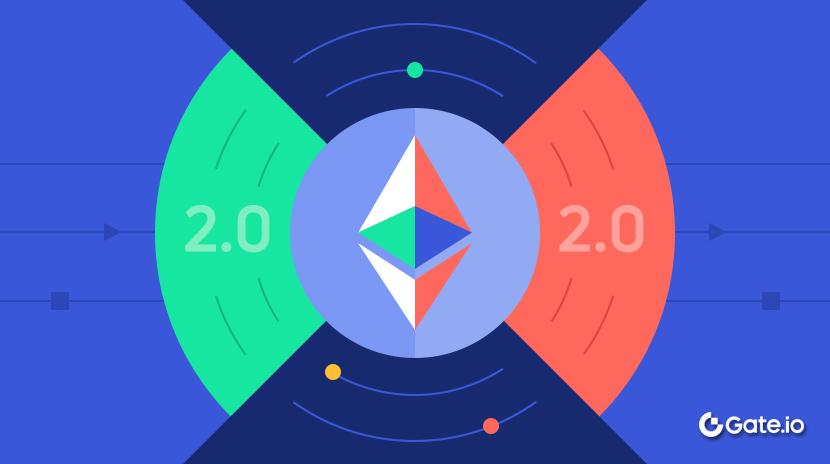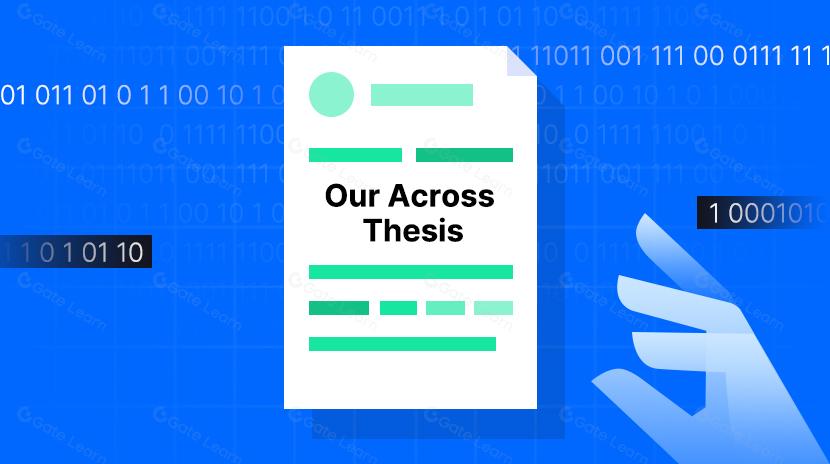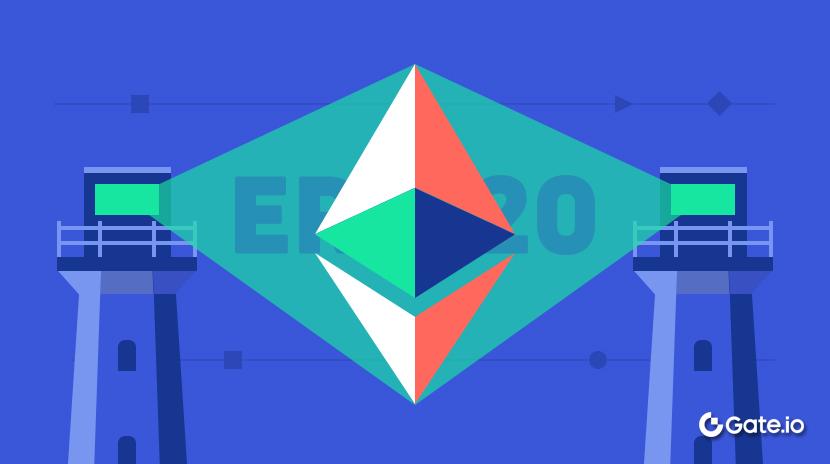Ethereum Argentina Developer Conference: Entering a New Decade of Technology and Applications
Opening Ceremony: From the First Webpage to the Ethereum World Expo
The Ethereum Developer Conference is taking place in Buenos Aires, Argentina, from November 17 to 22. The week features over 40 official events, more than 75 project showcases, and hundreds of side events citywide, drawing an expected 15,000 attendees.
At the opening, the host began with Tim Berners-Lee’s launch of the first webpage in 1991, tracing the internet’s evolution from Web1 to today’s Web3. This year’s conference, dubbed the “Ethereum World Expo,” brings together leading global projects and highlights the achievements of Argentina’s local community. Immediately after the ceremony, Ethereum Day kicked off with major topics ranging from the Ethereum Foundation’s governance focus and protocol advancements to privacy, security, institutional adoption, and future roadmaps, with core team members and researchers providing the latest updates.
Ethereum & Foundation Updates (I): Tomasz Stanczak on a Decade of Growth and Future Challenges
Tomasz Stanczak, Co-Executive Director of the Ethereum Foundation, emphasized in his keynote that Ethereum’s first ten years built the foundation for consensus, clients, and privacy tools. Looking ahead, he sees greater challenges emerging in privacy, decentralization, and user autonomy—challenges that demand broader participation in the ecosystem.
Describing Ethereum’s participant structure, Tomasz highlighted the ecosystem’s diversity: local organizers who brought Devcon to Argentina, communities working on urban experiments and public goods, core developers driving protocol upgrades, engineers prioritizing privacy by default, active L2 teams, interdisciplinary contributors from academia and finance, and volunteers localizing the Ethereum website into multiple languages. He stressed that these long-term builders underpin the protocol’s security and network vitality.
Tomasz noted that Ethereum’s record of zero downtime through multiple upgrades is the result of consistent, ongoing contributions from the community. He believes now is a pivotal moment to both reflect on milestones and reconsider the next strategic directions. He encouraged developers and users to engage more directly—by building applications or using ETH in daily interactions—to make Ethereum’s use and governance more aligned with real-world needs.
In the Q&A, he said the most meaningful outcome would be if, a decade from now, builders credit this conference as their starting point. Reflecting on the Argentine context, he observed that in a high-inflation, capital-constrained environment, crypto assets offer tangible benefits for everyday users. Yet, privacy, security, and usability remain challenges for true decentralization. He emphasized the importance of local efforts in these areas. His advice for newcomers: strengthen your “connective capacity”—proactively communicating across teams and communities often drives unexpected progress.
Ethereum & Foundation Updates (II): Hsiao-Wei Wang on the Foundation’s Three Pillars
Hsiao-Wei Wang, Co-Executive Director of the Ethereum Foundation, used the metaphor of a staircase to summarize Ethereum’s first decade: “This is a staircase continually built by the global community, with no set endpoint—a path anyone can climb at their own pace. Every step a builder lays becomes the starting point for those who follow.”
She pointed out that Ethereum is now more than a blockchain; it serves as public infrastructure for new forms of assets, identity, culture, and collaboration. Its success stems from the fact that “no single team owns it”—every participant, including those in L2, is just one rung on the ladder. The Foundation’s role isn’t to climb highest itself, but to steady the ladder and help shape the next decade together.
Reflecting on her joint leadership with Tomasz, she defined the Foundation’s new phase by three core strengths. First, reliability: Ethereum has maintained zero downtime through major upgrades, earning trust through steadfast engineering standards—block by block. Second, flexibility: the Foundation doesn’t claim to have all the answers, but adapts to community needs and external changes, ensuring the protocol remains consistent and adaptive as usage evolves. Third, true governance responsibility: the Foundation’s job is to provide a stable environment for the ecosystem, not to dictate Ethereum’s direction—direction should form organically in an open environment.
Hsiao-Wei emphasized that Ethereum’s staircase is open to everyone—researchers, client and app developers, investors, end users, scientists, scholars, students, and local community organizers. The Foundation’s responsibility is to back emerging, underappreciated directions like client diversity and cutting-edge research, allowing these once-overlooked steps to become future milestones.
She also stressed that decentralization, neutrality, and resilience under pressure require active protection through transparent, honest, and uncompromising design principles. Undermining these values could put the entire Ethereum structure at systemic risk.
Scaling L1, Scaling Blobs, Enhancing User Experience: Protocol Update Brief
Ethereum protocol team members Ansgar Dietrichs and Barnabé Monnot presented a progress update following the Foundation’s restructuring. The focus: scaling L1, scaling data blobs, and improving user experience.
For L1 scaling, Ansgar explained that Ethereum’s block gas limit has long been capped at 30 million, with engineering focused on key upgrades like the Merge and account abstraction. As L1 more clearly serves as the “settlement layer,” the team is optimizing clients and protocol rather than relying on costly hardware upgrades to boost throughput.
This year, client optimizations raised the gas limit to 45 million, with plans for 60 million at the next hard fork. The team is also pursuing opcode repricing and access list proposals to further improve execution efficiency. Ansgar revealed that the ZK-EVM prototype now enables real-time proofs in under 12 seconds, paving the way to lower node computation requirements in the future.
In scaling blobs, he highlighted EIP-4844’s role in meeting Rollup data availability needs. Proto-danksharding introduces data blobs and commitment mechanisms, allowing Rollups to submit data at lower costs. The next hard fork will add sampling-based proofs of data availability, setting the stage for even larger blob capacity.
Barnabé outlined user experience improvements, including Interop for cross-chain interoperability, the Trillion Dollar Security Initiative, and the privacy-first wallet project Kohaku. The core focus: Interop. Its goal is to give users and institutions a “seamless, secure, and permissionless” multi-chain experience. Open intent frameworks and modular cross-chain stacks allow users to simply declare their intent—back-end systems automatically handle cross-chain transactions and swaps, eliminating manual bridging. The team is also working on improving finality times for more efficient on- and off-chain interactions.
Laying the Foundation for Trillion-Dollar Assets
Fredrik Svantes, Ethereum Foundation Protocol Security Lead, and Mehdi Zerouali, Sigma Prime Co-Founder, highlighted in the “Trillion Dollar Security Initiative” session that Ethereum has evolved from supporting millions of users and tens of billions in assets to becoming trillion-dollar public infrastructure. Security must evolve to match the future scale and complexity of assets and applications.
The initiative targets three key layers. First, endpoint security and wallet experience, with the goal of solving blind signing—ensuring wallets display transaction consequences clearly for users to understand what they sign. Second, frontend and infrastructure security: the Fiber Frontend project is developing verifiable, interchangeable frontends to reduce risk if a single site is compromised by malicious scripts. Third, communication and transparency: the Foundation’s digital studio is building a public website that uses progress bars and other tools to show project status and gaps, helping the community understand and contribute to the security roadmap.
Mehdi stressed that Trillion Dollar Security Initiative is an open ecosystem-wide issue library—every solution must be open source, auditable, and community-owned. He called blind signing a plague, arguing that security should be a default, not an added cost for users. In the Q&A, both noted that as AI tools accelerate code production, demand for security researchers and architectural audits will only rise. Ethereum is already funding post-quantum cryptography research and prototype development—making Ethereum among the most quantum-resilient public chains.
On ZK-EVM, they likened current security to Solidity’s early stage in 2016, requiring systematic training of new security engineers and gradual progress through open collaboration. Feedback from traditional institutions shows many now view Ethereum as “the chain with the fewest underlying security concerns,” as seen in their deployment choices.
Institutions & Decentralization: Danny Ryan on Wall Street and Ethereum
Danny Ryan, core researcher at the Ethereum Foundation, shared in his “Institutions Decentralization” talk that, after shifting from protocol design to daily engagement with banks and large institutions, he realized traditional finance is far less efficient than most assume. Asset managers rely on incompatible software, fax machines, and manual reconciliation. Securities settlement still operates on T+1 or T+2 timelines.
In this environment, institutions focus on counterparty risk—scrutinizing who might cause losses, from trading partners to infrastructure providers. Here, Ethereum’s credible neutrality and decentralization are advantages: multiple clients and thousands of nodes deliver high availability and cryptoeconomic security, positioning Ethereum as infrastructure for trillion-dollar assets.
Danny stressed that for institutions, privacy is a basic requirement—not a bonus. If privacy doesn’t match existing systems, most partnerships can’t start. He believes building usable privacy for institutions will drive further investment in zero-knowledge proofs and related scaling and privacy tech. Meanwhile, as regulatory clarity grows, stablecoins and network liquidity effects are set for major expansion—Ethereum must secure a key role in this next phase.
Architecturally, Ethereum’s modular design and L2 ecosystem appeal to institutions, who can create asset-specific L2s with partners while sharing Ethereum’s security and liquidity.
He argued the real goal isn’t just “tokenizing assets,” but building on-chain systems so compelling that real-world assets are drawn in. We should measure success at the trillion-dollar scale, while RWA on-chain is still in the tens of billions—a fraction of global investable assets.
In Q&A, he observed that institutions often mistake decentralization for “unregulatable” or “totally public.” In fact, programmable access controls and privacy tech can cut intermediary risk while staying compliant.
He encouraged builders to form “translation alliances” with traditional finance professionals to better align language and thinking. On fears of “institutional capture,” he acknowledged the risk but insisted the priority is keeping Ethereum’s core protocol globally distributed—then supporting large-scale asset migration.
Ethereum (Roadmap) in 30min: Vitalik’s Principles and Technology Path
In his “Ethereum (Roadmap) in 30min” keynote, Ethereum co-founder Vitalik Buterin started with the FTX case, contrasting centralized institutions’ “Don’t be evil” reliance on personal trust with Ethereum’s “Can’t be evil” principle. He defined Ethereum as a global, open, censorship-resistant application platform, highlighting programmability—anyone can deploy smart contracts, not just use preset transaction types—as the core advantage.
He detailed blockchain strengths: payments and finance applications, DAOs, decentralized identity and ENS, voting and censorship-resistant publishing, and proving existence or scarcity at a specific time. Limitations include insufficient privacy, inability to handle ultra-high throughput or low-latency computation, and no direct access to real-world data.
On the tech roadmap, Vitalik dubbed 2025 and 2026 Ethereum’s “scaling arc.” The gas limit has risen about 50% this year, with the network moving toward 60 million. Future upgrades—including proposer-builder separation and block-level access lists—will further boost throughput without raising hardware requirements.
Vitalik is especially optimistic about ZK-EVM, which lets nodes verify proofs instead of replaying all executions, slashing full-node sync and compute costs and enabling full-node operation on laptops or phones. The long-term “Lean Ethereum” vision focuses on adding near-optimal components—zero-knowledge-friendly VMs and hash functions, post-quantum cryptography, formal verification, and better data availability. On the user side, privacy and security will advance through light clients, account abstraction, and wallets with hardware or social recovery.
In Q&A, Vitalik summed up Ethereum’s stance toward Wall Street: “They are users, and we support all users,” with credible neutrality as the foundation. On bringing Ethereum features into daily life, he cited merchants in Buenos Aires now accepting ETH and stablecoins, and urged adoption of open, verifiable tech stacks in operating systems, communications, and governance. For the most vital personal skill, he advised community members to become “generalists”—install a wallet, pay with ETH, join a DAO, write a simple contract, and build a basic understanding of the protocol.
Statement:
- This article is republished from [Foresight News]. Copyright belongs to the original author [Sanqing, Foresight News]. If you have objections to this republication, please contact the Gate Learn team, and we will address your request promptly according to our procedures.
- Disclaimer: The views and opinions expressed in this article are solely those of the author and do not constitute investment advice.
- Other language versions of this article are translated by the Gate Learn team. Please do not copy, distribute, or plagiarize translated articles without referencing Gate.
Related Articles

What Is Ethereum 2.0? Understanding The Merge

Reflections on Ethereum Governance Following the 3074 Saga

What is Neiro? All You Need to Know About NEIROETH in 2025

Our Across Thesis

An Introduction to ERC-20 Tokens
